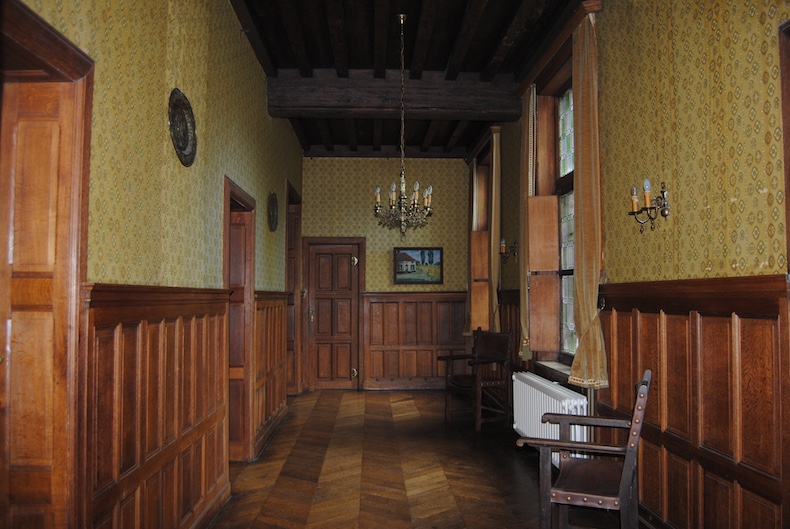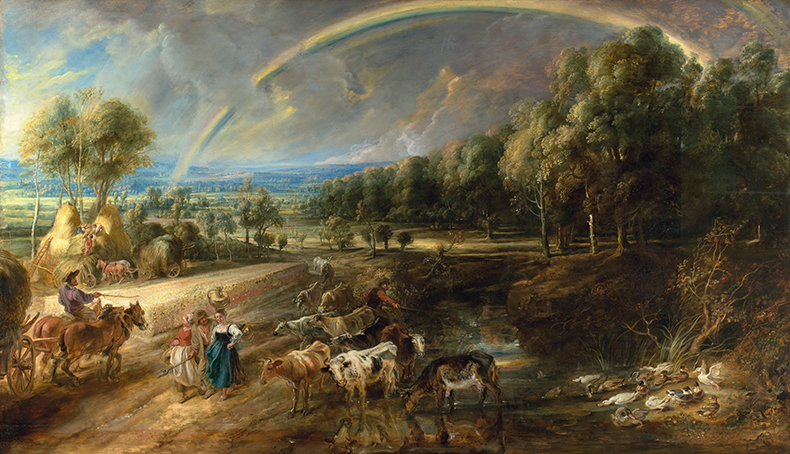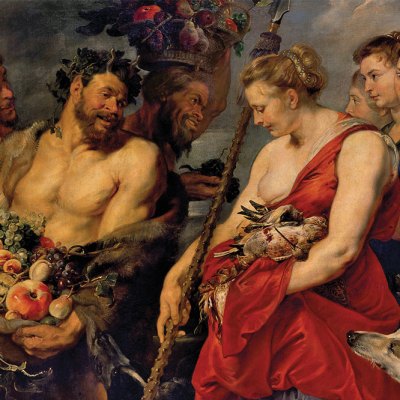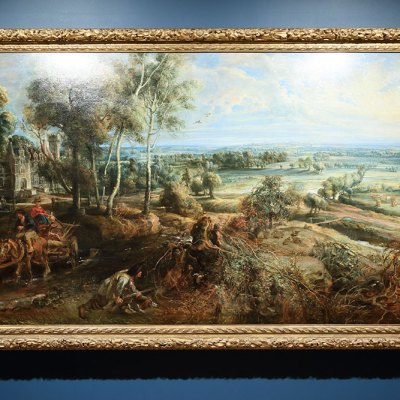From the February 2025 issue of Apollo. Preview and subscribe here.
Nowadays, to get a sense of Rubens as a landscape painter one would probably be better off visiting London or Paris than Antwerp, where he lived and worked for most of his life. This is a fact of which Rubens scholars in Belgium are all too aware. ‘We can’t bring his landscape paintings here,’ Bert Watteeuw, director of the Rubenshuis in Antwerp, tells me as we stroll around the grounds of Het Steen (‘the stone’), the castle in the Flemish countryside where Rubens lived and painted for the last five years of his life. ‘You Brits took basically all of them from us.’
Nonetheless, the artist is Flanders’ most prized cultural possession, and Rubens business there is booming. The Rubenshuis is in the middle of a long-term restoration project. The replanting of the adjoining garden has been overseen by curator Klara Alen, who has consulted 17th-century documents and artworks in order to replicate the kinds of plants that the artist would have grown there, while the residence – a Flemish townhouse on to which Rubens bolted an Italianate palazzo – is being restored and is scheduled to reopen in 2030.
Just a few miles outside the city, Het Steen has become the latest addition to the growing collection of Rubens memorabilia in Flanders. For years privately owned, it was bought in 2019 by the Flemish government’s tourist arm. Rubens – who possessed what today might be considered the unartistic qualities of enormous financial and reputational success and business savviness – snapped it up in 1635 after its owner had gone bankrupt and the castle had been seized by the Council of Brabant. Rubens settled in, proudly declaring himself lord of Het Steen. It was here that he produced several of his greatest landscapes.
An Autumn Landscape with a View of Het Steen in the Early Morning (c. 1636), Peter Paul Rubens. Photo: © National Gallery, London

Located in the village of Elewijt, about halfway between Antwerp and Brussels, Het Steen stands just off a six-lane motorway, which in the 17th century was already the main route ferrying trade between Antwerp, Mechelin and Brussels. The castle itself originated in the 14th century but was thoroughly renovated by Rubens and his second wife, Helena Fourment, who added a new wing to the existing structure. It went through several transformations in the centuries that followed, notably in the late 19th century by the architect Eugène Carpentier, who moved the entrance to the rear, did away with the moat and added a pond. Carpentier aimed to keep the facade historically plausible, so, with its turret and characteristically Flemish gabled terrace, Het Steen does not look entirely different from how it does in Rubens’s large panel An Autumn Landscape with a View of Het Steen in the Early Morning (c. 1636), now in the National Gallery in London – a busy composition with horses, a hunter and a full view of the entrance over the moat and the castle’s crenellated tower, which was pulled down at some point in the late 18th century. Work has not yet begun to restore Het Steen, so when I visit I find it in a state of ghostly abandonment: broken window panes, fly corpses strewn over the sills and thick cobwebs clinging to the walls. One room, empty except for a single wooden chair, reminds me of the torture scene in Casino Royale (2006). Watteeuw, who is acting as a consultant on the renovation of Het Steen, has recently moved into a ramshackle cottage in the grounds, with no washing machine, a bathroom I can barely stand up in and an electric heater that looks as if it should have been decommissioned in 1980. His mission is to keep an eye on the project, but there is also, perhaps, something romantic for Watteeuw in cosplaying 17th-century life, dedicating himself to Rubens by living as one of his servants would have done. ‘I’m a single man so I could have got into crime,’ he says. ‘But I decided to do this instead and live in history.’
One of the corridors inside Het Steen in Elewijt. Courtesy Visit Flanders

The plans for Het Steen are not yet defined, but Watteeuw says it will probably become a digital, immersive experience related to Rubens – largely because the castle, with its moat and nearby flood-prone river, is an unsuitable environment in which to house centuries-old artworks. Watteeuw wants it to be open to the public and would like to involve the nearby horticultural school in planting and maintaining the orchards. But Het Steen has already borne much fruit in the field of Rubens scholarship. We take a short walk down a muddy path to the river Senne, which flows through Brussels but here is just a stream, until we come across a stone sluice gate. Through studying recently rediscovered maps of the area drawn up by a surveyor called Joannes Petrebus in the 1680s, Watteeuw has been able to demonstrate that it was from this very spot that Rubens surveyed the terrain he painted in The Rainbow Landscape (c. 1636), now hanging in the Wallace Collection. Stand here today and the natural environment has not changed much. The same goes for his Landscape with an Avenue of Trees (c. 1635) – now in the Museum of Fine Arts, Boston – which Watteeuw has cross-referenced with a line of trees on Petrebus’s map to find that Rubens almost certainly painted it from the lost tower at Het Steen. It has always been known that the castle and its environs were the subject of several of the artist’s late landscapes, but understanding the exact vantage points he used shows the extent to which Rubens – that great exponent of flamboyantly imaginative history paintings – had become wedded to the land around him.
The Rainbow Landscape (c. 1636), Peter Paul Rubens. Photo: © Trustees of the Wallace Collection, London

And yet the landscapes are in their own way imaginative, deceptive creations. Rubens idealised his environment in these works, leaving out the details of what was, as Watteeuw says, ‘never a rural arcadia’, but a hub of transit and trade. On this supposedly bucolic terrain the artist and his neighbours were busy erecting fences and managing water supplies (a document found in the attic of the castle after its sale in 2019 outlines an application made by Fourment to divert a nearby river to fill the castle’s moat). Rubens changed details in his paintings, placing rivers and trees closer together to create a more harmonious composition in Landscape with Windmill and Bird-Trap (c. 1635–40), now in the Oldmasters Museum, Brussels; he added that impossibly vivid rainbow in The Rainbow Landscape; and where several works show loitering cattle and horses, archive documents describe fines for unauthorised grazing on private land in the area.
The first line on Rubens’s tombstone, in the church of St James in Antwerp, pronounces him son of a senator of the city; the second trumpets his ownership of Het Steen. Rubens was an artist engaged in the business of posterity. Much has been made of the idea that his late landscapes were painted for his own enjoyment rather than for commissions. And yet, look at the scene in Autumn Landscape, stretching into the far distance and taking in the land Rubens owned, all the way to Muizen, some five miles to the north-east. A vision of pastoral bliss, yes, but a display of pride, ego and ownership too. Here, at Het Steen, we find a painter marking his territory, in more ways than one.
Exterior view of Het Steen, the castle in Elewijt, Flanders, which Peter Paul Rubens bought in 1635. Photo: © Romain Foubert

From the February 2025 issue of Apollo. Preview and subscribe here.


